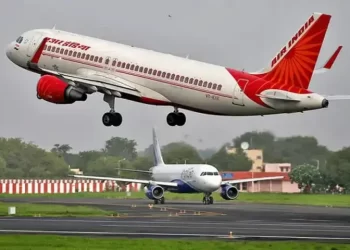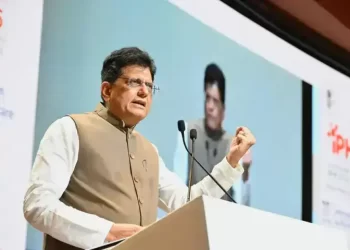BEIRUT (news agencies) — The Lebanese militant group Hezbollah this week struck a military post in northern Israel using a drone that fired two missiles. The attack wounded three soldiers, one of them seriously, according to the Israeli military.
Hezbollah has regularly fired missiles across the border with Israel over the past seven months, but the one on Thursday appears to have been the first successful missile airstrike it has launched from within Israeli airspace.
The group has stepped up its attacks on Israel in recent weeks, particularly since the Israeli incursion into the southern city of Rafah in the Gaza Strip. It has struck deeper inside Israel and introduced new and more advanced weaponry.
“This is a method of sending messages on the ground to the Israeli enemy, meaning that this is part of what we have, and if needed we can strike more,” said Lebanese political analyst Faisal Abdul-Sater who closely follows Hezbollah.
While the cross-border exchanges of fire have been ongoing since early October, “complex attacks” by Hezbollah began a few days after Iran’s unprecedented drone and missile barrage attack on Israel in mid-April.
In the past two weeks, Hezbollah has escalated further in response to the Israeli incursion into the city of southern Rafah in the Gaza Strip, a Lebanese official familiar with the group’s operations said. The official spoke on condition of anonymity because he was not authorized to detail military information to the media.
The Thursday afternoon attack by a drone carrying missiles came just days after Hezbollah launched three anti-tank guided missiles at an Israeli military post that controlled a surveillance balloon flying over the border. They released camera footage afterward to show they had hit their mark. Hours later, the Israeli military confirmed that the spy balloon had been shot down over Lebanon.
The night before, Hezbollah had carried out its deepest attack in Israel to date using explosive drones to strike at a base in Ilaniya near the city of Tiberias about 35 kilometers (22 miles) from the Lebanon border. The Israeli military said the attack did not hurt anyone.
Abdul-Sater, the analyst, said the Iran-led coalition known as the axis of resistance, which includes the Palestinian militant group Hamas, has warned that if Israeli troops launch a full-scale invasion of Rafah in an attempt to go after Hamas, other fronts will also escalate.
Yemen’s Iran-backed Houthi rebels claimed Wednesday that they attacked a U.S. destroyer while Iran-backed militants in Iraq have said they fired a series of drones toward Israel in recent weeks after having gone relatively quiet since February.
Hezbollah’s use of more advanced weaponry, including drones capable of firing missiles, explosive drones and the small type of guided missile known as Almas, or Diamond, that was used to attack the base controlling the balloon has raised alarms within the Israeli military.
“Hezbollah has been escalating the situation in the north,” said military spokesman Lt. Col. Nadav Shoshani. “They’ve been firing more and more.”
In adapting its attacks, Hezbollah has also managed to reduce the numbers of fighters lost compared with the early weeks of the conflict.
The group has lost more than 250 fighters so far, compared with 15 Israeli troops since fighting broke out along the Lebanon-Israel border a day after the Israel-Hamas war started on Oct. 7.
According to a count by media, Hezbollah lost 47 fighters in October and 35 in November, compared with 20 in April and 12 so far this month.
The official familiar with the group’s operations said Hezbollah had reduced the numbers of fighters along the border areas to bring down the numbers of casualties. While Hezbollah continues to fire Russian-made anti-tank Kornet missiles from areas close to the border, it has also shifted to firing drones and other types of rockets with heavy war heads — including Almas as well as Falaq and Burkan rockets — from areas several kilometers (miles) from the border.
Over the weekend, Hezbollah said it had launched a new rocket with a heavy warhead named Jihad Mughniyeh after a senior operative who was killed in an Israeli airstrike on southern Syria in 2015.
Eva J. Koulouriotis, a political analyst specialized in the Middle East and jihadi groups wrote on the social media platform X that Hezbollah’s recent escalation likely has several goals, including raising the ceiling of the group’s demands in any future negotiations for a border deal, as well as raising military pressure on Israel’s military in light of the preparations for the battle in Rafah.
Israel’s Defense Minister Yoav Gallant vowed in a speech last week that “we will stand, we will achieve our goals, we will hit Hamas, we will destroy Hezbollah, and we will bring security.”
On Monday, Hezbollah leader Hassan Nasrallah reiterated in a speech that there will be no end to the fighting along the Lebanon-Israel border until Israel’s military operations in the Gaza Strip come to an end.









